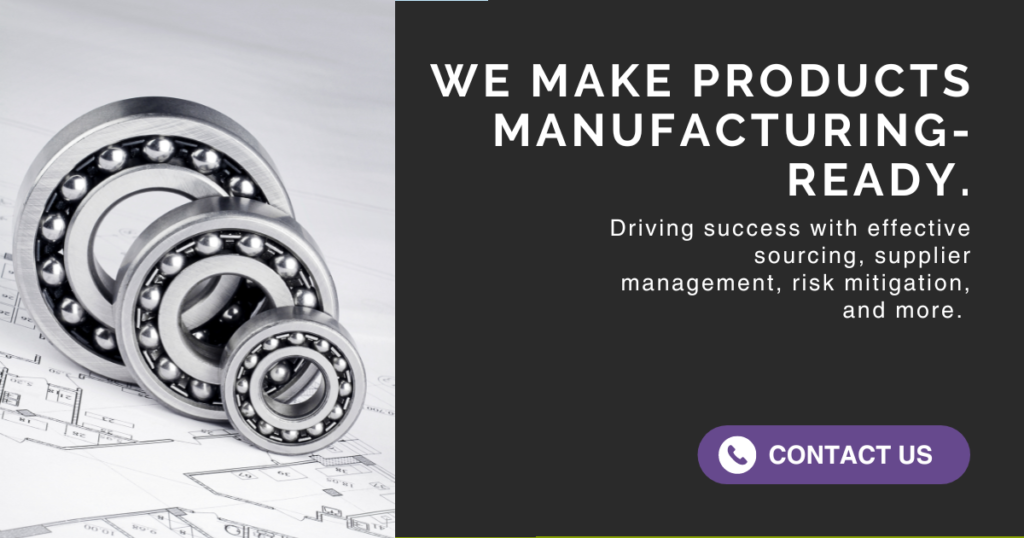Prepping for an investor pitch can be nerve-racking, especially for startups that are trying to bring their hardware products to market. The purpose of an investor pitch is to convince investors that your idea is not only viable, but that it’s worth an investment.
Unfortunately, many startup founders make the mistake of focusing only on the end result of their product, missing critical areas that could cost them potential investment. In this post, we will discuss frequently overlooked data to include in your investor pitch.
Understand the Investor’s Perspective
Before you dive into preparing your deck, it’s essential to understand the investor’s perspective. According to TechCrunch, Investors are spending 24% less time looking at pitch decks each year. That means you need to focus on what investors actually want to see, the data!
Investors care about numbers, which include projections of your company’s revenue, growth, and costs. Because investors are looking for returns on their investments, the best way to convince them of your company’s value is to include realistic costs as well as anticipated growth. The costs should include an understanding of your product’s development timeline and anticipated expenditures during product realization.
Your startup’s story is both valuable and important, but data speaks volumes. Beyond this, investors want to know the risks involved and how you plan to mitigate them. Understanding the challenges your company and its products will face will help you create a pitch deck that meets investor expectations and provides them with the information they need.

What Elements Make a Good Hardware Product Pitch Deck?
When preparing your pitch deck for potential investors, there are several important points to include that showcase your startup’s viability. Standard advice for a pitch deck includes the following elements:
- A comprehensive product overview
- Your product’s market opportunities
- The competitive landscape
- Your core team members and their roles
- Customer validation
You can also note any successful prototypes or minimum viable products (MVPs) developed to showcase your progress. If you do, just make sure it’s something worth sharing. The last thing you want is to offer up a prototype that looks like a high school science project!
To truly showcase your product knowledge, two important aspects should be included: a development timeline and estimated product realization costs. Both of these should include product development details, manufacturing set-up, and product launch based on realistic data.

Development Timeline
A development timeline is a crucial piece of a pitch deck. It provides investors with a clear understanding of both your progress and the anticipated milestones of your startup’s products.
A clear and realistic roadmap that demonstrates your ability to execute the business plan effectively. Here are the specific items you should consider as you develop the timeline:
- A Chart:
- Create a visual representation of your development timeline.
- A Gantt chart or a simple timeline graph can effectively show the duration, chronological order of milestones and their anticipated completion dates.
- Project Phases and Milestones:
- Divide your project’s development into distinct phases with key milestones.
- Each milestone should represent a significant achievement or progress point such as key iterations, regulatory approvals, product launches, etc.
- Start Date:
- Clearly state the starting point of your project or company’s development.
- It can be dependent upon funding, if raising capital is crucial to beginning the project.
- It can also have occurred in the past if some development has already taken place.
- Milestone Descriptions:
- For each milestone, provide a title or brief description of what it entails.
- Remember that the person doing the pitch should be able to articulate the milestones, and their benefits and answer any associated questions in more detail.
- Duration of Each Phase:
- Estimate the time it will take to complete each phase.
- Be realistic and consider potential delays or unforeseen challenges and include some contingency time.
- Dependencies:
- Highlight any dependencies between phases.
- If the completion of one phase is contingent on the completion of another, make this relationship clear.
- Risks and Mitigation Strategies:
- Identify potential risks and challenges that could impact your timeline.
- Remember that the person doing the pitch should be able to provide strategies you have in place to mitigate these risks without compromising the overall project.
- Past Achievements:
- If applicable, include any achievements or milestones you have already completed and where you are in the development process.
- This demonstrates your track record and ability to execute.
Remember that your development timeline should be well-structured, realistic, and aligned with your overall business strategy. It should inspire confidence in investors by demonstrating that you have a clear plan for achieving your goals.

Product Development & Launch Costs
In the product development and launch costs section of an investor pitch deck, you should provide a clear breakdown of the financial resources required to develop and launch your product. This demonstrates your understanding of the costs involved and your ability to manage the financial aspects of the project effectively. Here are some specific items you should consider including in this section:
- Research and Development (R&D):
- Salaries and wages for the R&D team or expenses for external design teams.
- Software and app development.
- Outsourcing expenses for specialized development tasks.
- Intellectual Property (IP):
- Legal fees for patent applications, trademarks, or copyrights.
- Licensing fees for third-party technologies or intellectual property.
- Prototyping and Testing:
- Costs associated with creating prototypes for testing and evaluation.
- Material and fabrication costs.
- User testing expenses, including participant compensation, facilities, and tools.
- Manufacturing and Production:
- Materials and component purchases.
- Tooling, fixtures, and other capital equipment for fabrication or test.
- Labor costs for manufacturing and assembly.
- Regulatory and Compliance Testing:
- Obtaining UL, TUV, CE, and other regulatory marks have significant costs.
- For radiating products, FCC and EMI testing is necessary.
- Packaging and Branding:
- Branding expenses, including logo design and marketing materials.
- Packaging design and material costs.
- For hazardous or fragile products, transportation testing may be required.
- Marketing and Launch:
- Marketing campaign expenses, including advertising, social media, and public relations.
- Costs of organizing launch events or promotions.
- Distribution and Logistics:
- Shipping and distribution costs to get the product to market.
- Warehousing expenses, if applicable.
- Operational Expenses:
- Overhead costs such as office space, utilities, and administrative expenses.
- IT infrastructure expenses including licenses and platforms.
During development, some of these expenses will need to be repeated during the various iterations or as the product evolves. Be sure to include these repeated costs as well as contingency for unexpected expenses or delays.
While investors are interested in the total budget, a useful tool is to integrate the development timeline with the expenditures to show when investments are needed to propel the product forward. This approach allows investors to stagger their investments based on completion of milestones.
Investors want to see that you have a comprehensive understanding of the financial aspects of your project. Show them proof that you’ve thought through the potential expenses associated with your product development and launch.

Experts Provide Insights when Data Doesn’t Yet Exist
A challenge many startups face is generating realistic data when they haven’t developed a product before. While best guesses can be used, a pitch can quickly fall apart to a savvy investor’s questions.
Utilizing experts who have created products can provide insights about the development process, costs, and unexpected challenges to equip the startup with justification for the presented data.
At Zebulon Solutions, we offer services that help startups generate data to support the pitch deck:
- Summaries of development costs, tooling costs, and unit costs based on our experience with similar products and some “rule of thumb” calculations.
- A development schedule with realistic estimates for engineering, testing, and anticipated iterations.
- A projected expenditure timeline to identify when investment money is needed to keep the release timeline on track.
- An evaluation of the existing product for manufacturing readiness and scalability.
- And more!
We arm our customers with data that not only stands up to investor questions but also enhances their readiness to engage in conversations about the actual product costs with potential investors.
Incorporating such details into your pitch deck can go a long way in capturing investors’ attention.
For more information on how to uplevel your pitch deck before presenting to investors, contact us for a free consultation today!
